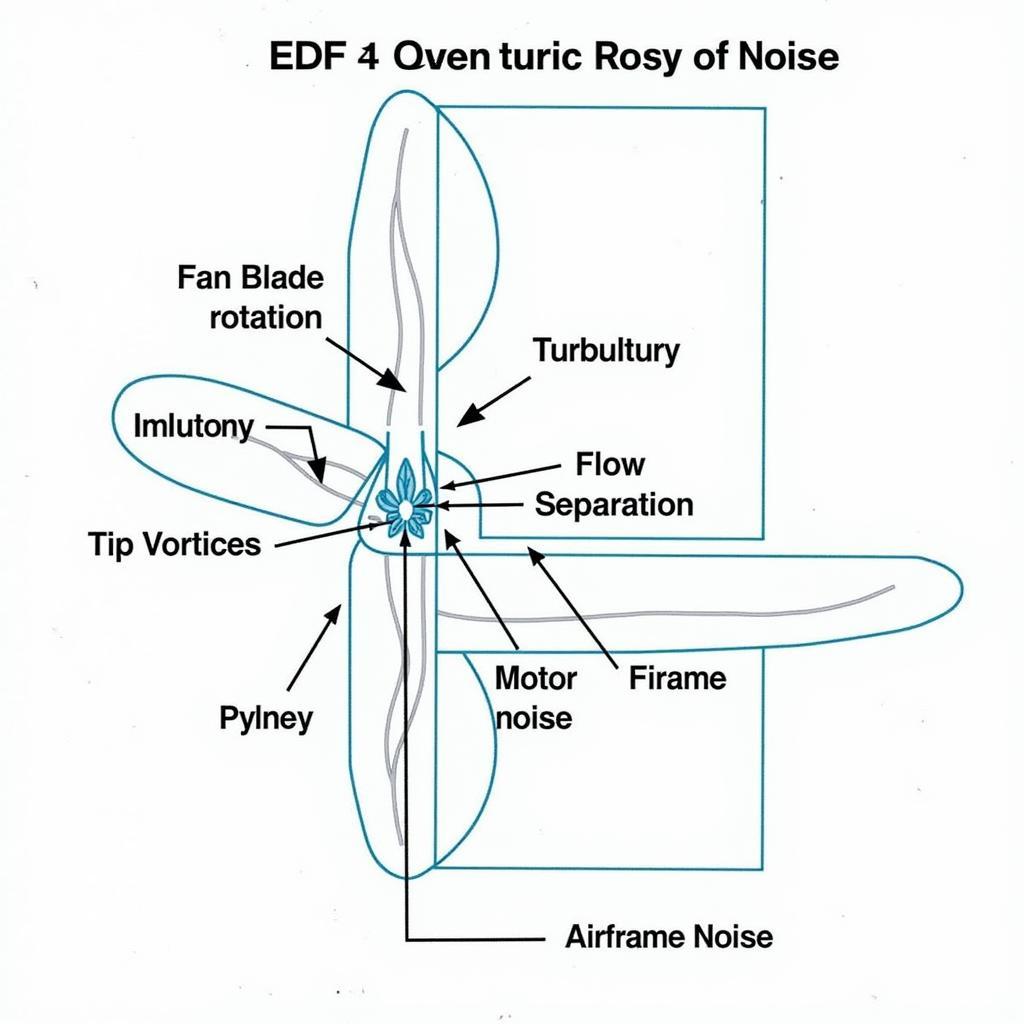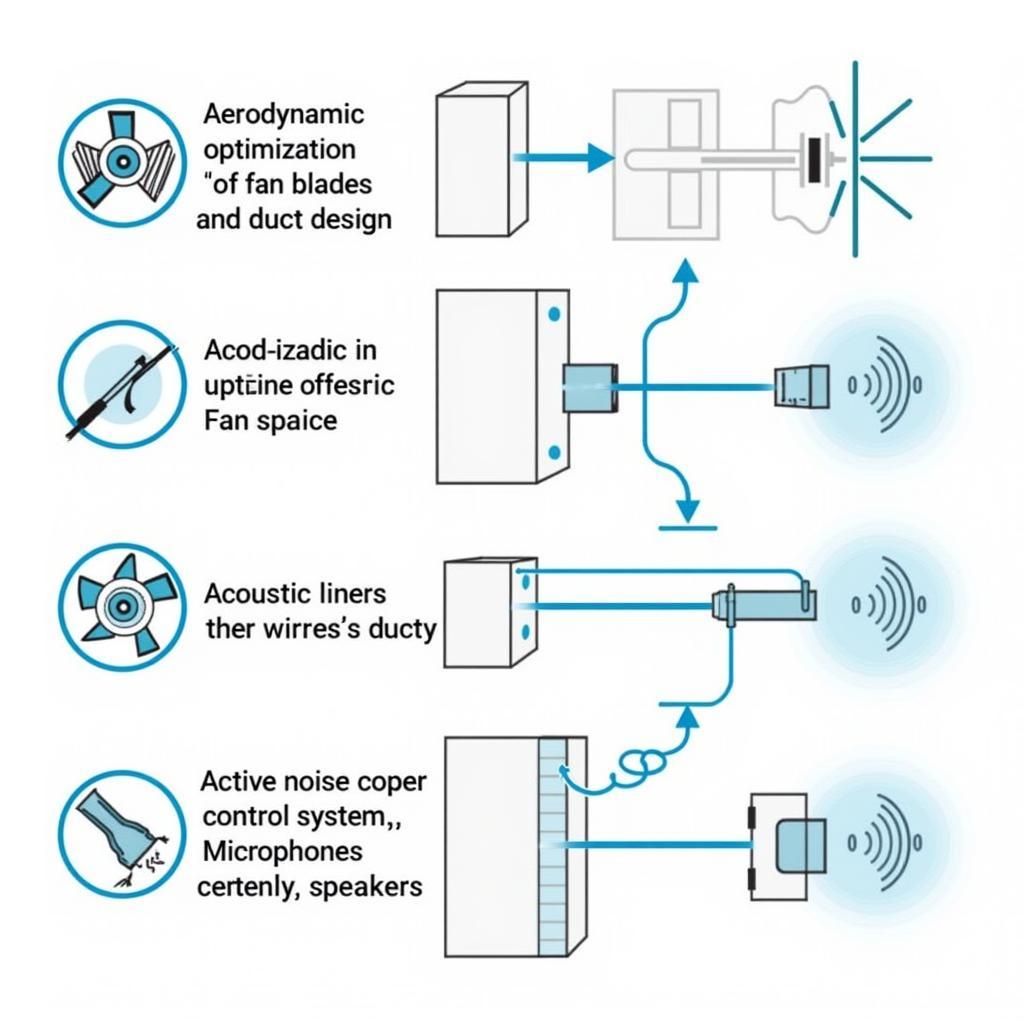Electric ducted fans (EDFs) have emerged as a promising technology in various applications, including unmanned aerial vehicles (UAVs), electric vertical takeoff and landing (eVTOL) aircraft, and ventilation systems. While EDFs offer several advantages such as high efficiency, compact size, and improved safety, they also present unique challenges related to noise generation. Understanding the acoustic characteristics of EDFs is crucial for optimizing their design, reducing noise pollution, and ensuring compliance with noise regulations.
This article delves into the analysis of acoustic characteristics for electric ducted fans, exploring the sources of noise, factors influencing noise emission, and techniques for noise reduction.
Sources of Noise in Electric Ducted Fans
The noise generated by an EDF originates from various sources within its system, each with distinct characteristics and mechanisms of sound production.
-
Fan Blade Rotation: As the fan blades rotate at high speeds, they interact with the surrounding air, creating pressure fluctuations that propagate as sound waves. This phenomenon, known as rotational noise, is a dominant source of EDF noise and is characterized by a tonal sound at the blade passing frequency (BPF) and its harmonics. The BPF is determined by the number of blades and the rotational speed of the fan.
-
Turbulence: The flow of air through the duct and over the fan blades is often turbulent, leading to random pressure fluctuations and broadband noise. Turbulence-induced noise is particularly significant at high flow rates and in ducts with complex geometries.
-
Tip Vortex: As the fan blades rotate, they generate vortices at their tips due to the pressure difference between the upper and lower surfaces. These tip vortices are highly turbulent and contribute to broadband noise, especially at high angles of attack.
-
Flow Separation: When the airflow separates from the fan blade or duct surface, it creates unsteady flow patterns and vortices, leading to increased turbulence and noise. Flow separation can occur at high angles of attack, sharp edges, or abrupt changes in duct geometry.
-
Motor Noise: Although electric motors are generally quieter than combustion engines, they can still contribute to overall EDF noise. Motor noise is typically characterized by a whining sound at frequencies related to the motor’s operating speed and electrical switching frequency.
-
Airframe Noise: The interaction of the EDF exhaust with the surrounding airframe or structures can also generate noise. This noise is influenced by the shape and size of the airframe, the velocity and direction of the exhaust jet, and the presence of any nearby surfaces.
 Noise sources in an electric ducted fan
Noise sources in an electric ducted fan
Factors Influencing EDF Noise
The acoustic characteristics of an EDF are influenced by a multitude of factors related to its design, operating conditions, and surrounding environment.
-
Fan Design: The number, shape, and spacing of fan blades significantly affect noise generation. Increasing the number of blades generally reduces the BPF and its harmonics but can also lead to higher broadband noise due to increased blade surface area and tip vortex interaction.
-
Rotational Speed: As the rotational speed of the fan increases, both the BPF and the overall noise levels increase. Higher rotational speeds result in higher blade tip speeds and increased turbulence, contributing to higher noise emissions.
-
Duct Geometry: The shape and size of the duct play a crucial role in noise propagation and reflection. Ducts with smooth contours and gradual transitions can help reduce flow separation and turbulence, while ducts with sharp edges or abrupt changes in cross-section can exacerbate noise generation.
-
Operating Conditions: The flow rate, angle of attack, and thrust level of the EDF all affect its acoustic signature. Higher flow rates and angles of attack generally lead to increased turbulence and noise, while higher thrust levels require higher rotational speeds, further contributing to noise.
-
Installation Effects: The way an EDF is installed in its intended application can significantly influence its noise emissions. Factors such as the distance between the EDF and nearby surfaces, the presence of any obstructions in the airflow path, and the use of vibration isolation mounts can all affect the overall noise levels.
Noise Reduction Techniques
Reducing noise from EDFs is essential for various reasons, including environmental concerns, regulatory compliance, and improved acoustic comfort. Numerous techniques have been developed to mitigate noise generation and propagation in EDF systems.
-
Aerodynamic Optimization: By optimizing the aerodynamic design of the fan blades, duct, and surrounding components, it is possible to reduce noise at its source. This can involve using advanced blade profiles, optimizing blade spacing and twist, and minimizing flow separation and turbulence through careful duct design.
-
Acoustic Liners: Acoustic liners are sound-absorbing materials placed on the interior surfaces of the duct to attenuate noise propagation. These liners typically consist of porous materials or perforated panels backed by a cavity, which absorb sound energy and convert it into heat.
-
Active Noise Control: Active noise control (ANC) systems use loudspeakers to generate sound waves that destructively interfere with the noise from the EDF, effectively canceling it out. ANC systems require microphones to measure the noise signal and sophisticated algorithms to generate the appropriate anti-noise signal in real-time.
-
Operational Strategies: Adjusting the operating conditions of the EDF can also help reduce noise. This can involve optimizing the rotational speed for a given thrust requirement, minimizing the angle of attack, and avoiding operating conditions known to produce high noise levels.
 Noise reduction techniques for electric ducted fans
Noise reduction techniques for electric ducted fans
Conclusion
The analysis of acoustic characteristics is paramount for understanding and mitigating noise generated by electric ducted fans. By identifying the sources of noise, examining the factors influencing noise emission, and implementing effective noise reduction techniques, engineers can design quieter and more environmentally friendly EDF systems for a wide range of applications. As EDF technology continues to advance, further research and development in acoustics will be crucial for unlocking its full potential while minimizing its noise footprint.


